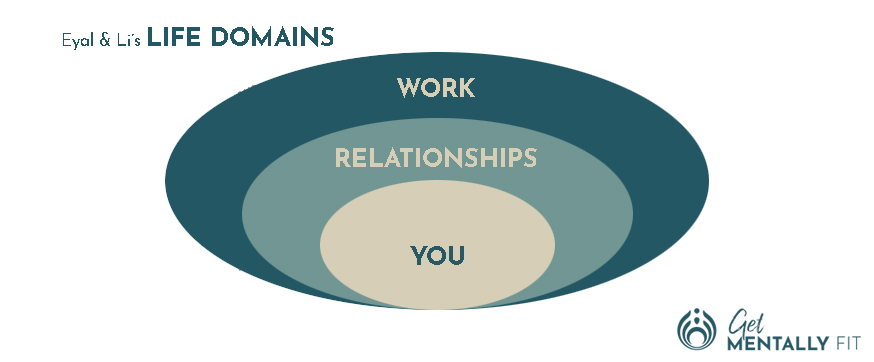Master Your Focus: How to Overcome Distractions and Gain True Traction
In today’s fast-paced world, distractions are everywhere—but according to Nir Eyal’s groundbreaking book, Indistractable, distraction isn’t about external interruptions; it’s about how we respond to them. If we don’t manage our internal triggers, we’ll constantly seek quick fixes that pull us away from meaningful work and personal fulfilment.
Previously, we explored Eyal’s insights on coping with internal triggers – reducing sources of discomfort to stop seeking temporary escapes. Now, we’re diving deeper into his proven strategies for gaining traction, so you can take control of your time and focus on what truly matters.
The Problem with To-Do Lists
Traditional to-do lists often work against us. Tasks pile up, deadlines shift, and unfinished items carry over day after day, creating a cycle of frustration. Instead of focusing on what we need to do, Eyal suggests we start with why – aligning our actions with our values and long-term goals.
Eyal and co-author Julie Li also highlight how spending too much time in one area of life—whether work, social media, or entertainment – can negatively impact other essential areas like relationships and personal well-being. By restructuring our approach to productivity, we can avoid burnout and create balance across all aspects of life.
Ready to break free from distractions and take charge of your focus? Let’s explore the actionable strategies that will help you become truly Indistractable.
Check out this fantastic video resource where Nir Eyal takes a deep dive into the inner world of distraction, common performance techniques, and ‘How to control your attention and choose your life’.
Timeboxing: The Productivity Hack That Transforms Leaders
In today’s fast-paced world, distractions can easily derail even the most focused professionals. One of the most effective ways to take control of your time is Timeboxing – a strategy where you schedule tasks in advance, ensuring alignment with your priorities.
Nir Eyal and Julie Li, authors of Indistractable, describe Timeboxing as “setting an implementation intention.” This means deciding what you’re going to do and when you’re going to do it. By allocating specific time slots for tasks, leaders can minimise distractions, enhance productivity, and maintain a healthy work-life balance.
But how does this technique work in real life? Let’s explore how successful leaders use Timeboxing across three key life domains: You, Relationships, and Work.

1. YOU – Controlling the Inputs for Success
As a leader, your personal well-being directly impacts your effectiveness. Research shows that prioritising activities like exercise, sleep, reading, or mindfulness enhances mental clarity and resilience.
Case Study: The Executive Who Beat Burnout
Emma, a Senior Executive at a marketing firm, constantly felt drained by endless emails and late-night work sessions. She used Timeboxing to schedule non-negotiable self-care activities, such as 30-minute workouts, reading, and meditation. Over time, her focus improved, stress levels dropped, and she became a more present and decisive leader.
💡 Pro Tip: Schedule time for yourself first—before work obligations take over. Input is more controllable than outcome, so focus on what you can do, not just the results you want.
2. RELATIONSHIPS – Making Time for What Matters
Strong personal connections are crucial for long-term well-being. Yet, many professionals unintentionally neglect their closest relationships due to work demands. Research suggests that having close friendships improves mental health and longevity.
Case Study: The Tech Founder Who Rebuilt His Personal Life
James, the CEO of a fast-growing start-up, realised his marriage and friendships were suffering due to work. By Timeboxing weekly date nights and friend meetups, he repaired strained relationships and felt more fulfilled outside of work. As a result, he became more productive and less distracted during work hours, knowing he had dedicated personal time.
💡 Pro Tip: Time with family and friends isn’t just leisure – it’s an investment in your long-term happiness and mental resilience.
3. WORK – Syncing for Maximum Efficiency
With constant emails, meetings, and interruptions, work can feel chaotic. Timeboxing helps professionals structure their day around value-driven tasks instead of reactive work. Studies reveal that employees who work over 55 hours per week are actually less productive than those with structured schedules.
Case Study: The Manager Who Cut Her Workweek by 10 Hours
Lisa, a finance manager, struggled with endless meetings and distractions. She introduced Timeboxing and calendar syncing with her team, ensuring uninterrupted deep work sessions. Within weeks, she reduced overtime by 10 hours per week, improved team efficiency, and delivered projects faster with less stress.
💡 Pro Tip: Sync your calendar with colleagues to ensure dedicated work time. Frequent schedule adjustments keep everyone aligned and prevent last-minute disruptions.

Unlock Your Full Potential with Expert Coaching
Mastering your time isn’t just about increasing productivity – it’s about unlocking your full leadership potential. When you take control of your focus and align your actions with your values, you gain the clarity, confidence, and resilience to lead effectively.
At Get Mentally Fit, we’ve helped hundreds of leaders transform their approach to work and life using science-backed strategies like Timeboxing. With expert coaching from Emily Johnson, our leading coaching psychologist, you’ll develop the skills to stay focused, reduce stress, and accelerate your professional growth.
🚀 Want to fast-track your success? Let’s start a conversation about how we can help you implement these strategies and achieve real, lasting results. Get in touch today!


